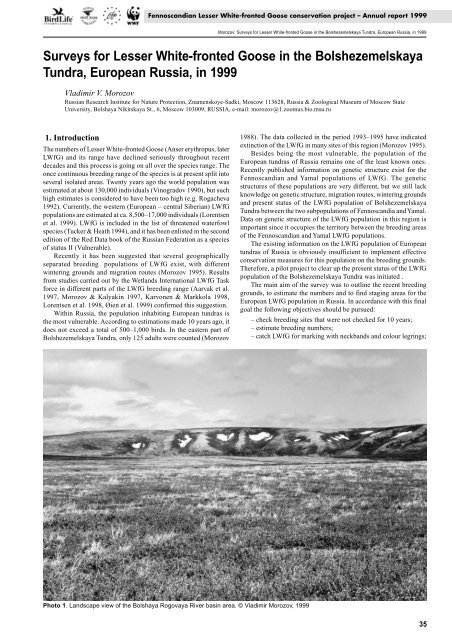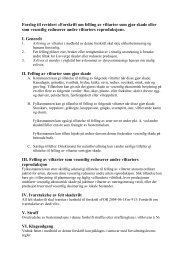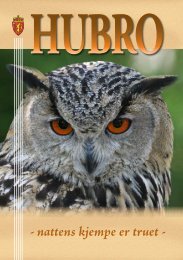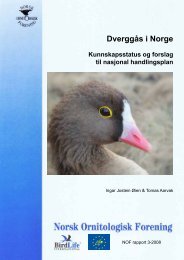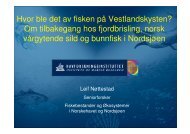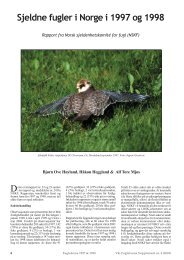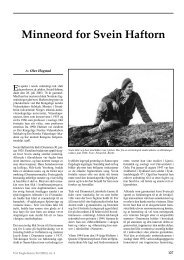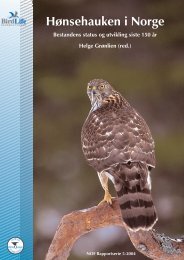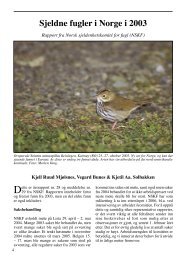Fennoscandian Lesser White-fronted Goose conservation project ...
Fennoscandian Lesser White-fronted Goose conservation project ...
Fennoscandian Lesser White-fronted Goose conservation project ...
Create successful ePaper yourself
Turn your PDF publications into a flip-book with our unique Google optimized e-Paper software.
1. Introduction<br />
The numbers of <strong>Lesser</strong> <strong>White</strong>-<strong>fronted</strong> <strong>Goose</strong> (Anser erythropus, later<br />
LWfG) and its range have declined seriously throughout recent<br />
decades and this process is going on all over the species range. The<br />
once continuous breeding range of the species is at present split into<br />
several isolated areas. Twenty years ago the world population was<br />
estimated at about 130,000 individuals (Vinogradov 1990), but such<br />
high estimates is considered to have been too high (e.g. Rogacheva<br />
1992). Currently, the western (European – central Siberian) LWfG<br />
populations are estimated at ca. 8,500–17,000 individuals (Lorentsen<br />
et al. 1999). LWfG is included in the list of threatened waterfowl<br />
species (Tucker & Heath 1994), and it has been enlisted in the second<br />
edition of the Red Data book of the Russian Federation as a species<br />
of status II (Vulnerable).<br />
Recently it has been suggested that several geographically<br />
separated breeding populations of LWfG exist, with different<br />
wintering grounds and migration routes (Morozov 1995). Results<br />
from studies carried out by the Wetlands International LWfG Task<br />
force in different parts of the LWfG breeding range (Aarvak et al.<br />
1997, Morozov & Kalyakin 1997, Karvonen & Markkola 1998,<br />
Lorentsen et al. 1998, Øien et al. 1999) confirmed this suggestion.<br />
Within Russia, the population inhabiting European tundras is<br />
the most vulnerable. According to estimations made 10 years ago, it<br />
does not exceed a total of 500–1,000 birds. In the eastern part of<br />
Bolshezemelskaya Tundra, only 125 adults were counted (Morozov<br />
<strong>Fennoscandian</strong> <strong>Lesser</strong> <strong>White</strong>-<strong>fronted</strong> <strong>Goose</strong> <strong>conservation</strong> <strong>project</strong> – Annual report 1999<br />
Photo 1. Landscape view of the Bolshaya Rogovaya River basin area. © Vladimir Morozov, 1999<br />
Morozov: Surveys for <strong>Lesser</strong> <strong>White</strong>-<strong>fronted</strong> <strong>Goose</strong> in the Bolshezemelskaya Tundra, European Russia, in 1999<br />
Surveys for <strong>Lesser</strong> <strong>White</strong>-<strong>fronted</strong> <strong>Goose</strong> in the Bolshezemelskaya<br />
Tundra, European Russia, in 1999<br />
Vladimir V. Morozov<br />
Russian Research Institute for Nature Protection, Znamenskoye-Sadki, Moscow 113628, Russia & Zoological Museum of Moscow State<br />
University, Bolshaya Nikitskaya St., 6, Moscow 103009, RUSSIA, e-mail: morozov@1.zoomus.bio.msu.ru<br />
1988). The data collected in the period 1993–1995 have indicated<br />
extinction of the LWfG in many sites of this region (Morozov 1995).<br />
Besides being the most vulnerable, the population of the<br />
European tundras of Russia remains one of the least known ones.<br />
Recently published information on genetic structure exist for the<br />
<strong>Fennoscandian</strong> and Yamal populations of LWfG. The genetic<br />
structures of these populations are very different, but we still lack<br />
knowledge on genetic structure, migration routes, wintering grounds<br />
and present status of the LWfG population of Bolshezemelskaya<br />
Tundra between the two subpopulations of Fennoscandia and Yamal.<br />
Data on genetic structure of the LWfG population in this region is<br />
important since it occupies the territory between the breeding areas<br />
of the <strong>Fennoscandian</strong> and Yamal LWfG populations.<br />
The existing information on the LWfG population of European<br />
tundras of Russia is obviously insufficient to implement effective<br />
<strong>conservation</strong> measures for this population on the breeding grounds.<br />
Therefore, a pilot <strong>project</strong> to clear up the present status of the LWfG<br />
population of the Bolshezemelskaya Tundra was initiated .<br />
The main aim of the survey was to outline the recent breeding<br />
grounds, to estimate the numbers and to find staging areas for the<br />
European LWfG population in Russia. In accordance with this final<br />
goal the following objectives should be pursued:<br />
– check breeding sites that were not checked for 10 years;<br />
– estimate breeding numbers;<br />
– catch LWfG for marking with neckbands and colour legrings;<br />
35


